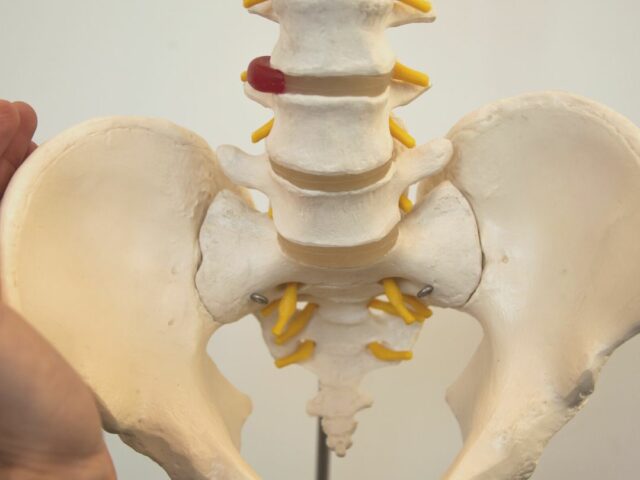Sciatica is a condition that can cause severe pain and discomfort, often radiating from the lower back down to the legs. This condition is typically caused by irritation or compression of the sciatic nerve, the longest nerve in the body. If you are experiencing symptoms of sciatica, it is essential to seek the help of a sciatica specialist. These medical professionals have the expertise to accurately diagnose your condition and develop an effective treatment plan tailored to your needs. In this article, we will explore the methods a sciatica specialist uses to diagnose sciatica and the steps involved in this process.
Understanding Sciatica: Symptoms and Causes
Before delving into the diagnostic process, it is crucial to understand the symptoms and potential causes of sciatica. Common symptoms of sciatica include:
- Pain: Sharp, shooting pain that starts in the lower back and radiates down the buttock and leg.
- Numbness and Tingling: A feeling of numbness or tingling in the leg or foot.
- Weakness: Muscle weakness in the affected leg.
- Difficulty Moving: Reduced ability to move the leg or foot.
Sciatica is often caused by conditions such as:
- Herniated Disc: A disc in the spine becomes displaced, pressing on the sciatic nerve.
- Spinal Stenosis: Narrowing of the spinal canal, which can compress the sciatic nerve.
- Piriformis Syndrome: The piriformis muscle in the buttocks irritates the sciatic nerve.
- Degenerative Disc Disease: Wear and tear on the spinal discs that can lead to nerve compression.
Initial Consultation and Medical History
The diagnostic process begins with an initial consultation. During this visit, the sciatica specialist will take a detailed medical history to understand your symptoms, lifestyle, and any previous injuries or conditions that may be contributing to your pain. Key aspects of this step include:
- Symptom Description: You will be asked to describe your pain, including its location, intensity, and duration.
- Medical Background: The specialist will inquire about your medical history, including any previous back injuries, surgeries, or chronic conditions.
- Lifestyle Factors: Information about your daily activities, occupation, and exercise routine will help the specialist understand potential causes of your symptoms.
Physical Examination
Following the initial consultation, a thorough physical examination is conducted to assess your physical condition and identify signs of sciatica. The examination typically includes:
- Observation: The specialist will observe your posture, gait, and range of motion.
- Palpation: Gentle pressure is applied to specific areas of your back and legs to locate tender points or muscle spasms.
- Neurological Tests: Reflexes, muscle strength, and sensory responses are tested to evaluate nerve function.
- Leg Raise Test: You may be asked to perform a straight leg raise test, where you lie on your back and lift your leg while keeping it straight. This can help pinpoint the location of nerve irritation.
Imaging Studies
To gain a more detailed understanding of the underlying cause of your sciatica, imaging studies may be required. Common imaging techniques include:
- X-rays: These can reveal bone abnormalities, such as spinal stenosis or bone spurs.
- Magnetic Resonance Imaging (MRI): An MRI provides detailed images of soft tissues, including discs and nerves, allowing the specialist to identify herniated discs or nerve compression.
- Computed Tomography (CT) Scan: A CT scan offers a more detailed view of the spinal structures and can help detect issues not visible on X-rays.
- Electromyography (EMG): This test measures the electrical activity of muscles and can help determine if nerve compression is affecting muscle function.
Differential Diagnosis
Sciatica symptoms can sometimes mimic other conditions, making it essential to perform a differential diagnosis. The specialist will rule out other potential causes of your symptoms, such as:
- Peripheral Neuropathy: Nerve damage outside the spine, often caused by diabetes or other conditions.
- Hip Pathologies: Issues with the hip joint, such as arthritis, can cause similar pain patterns.
- Sacroiliac Joint Dysfunction: Problems with the sacroiliac joint can also result in lower back and leg pain.
Confirming the Diagnosis
After gathering all necessary information from the medical history, physical examination, and imaging studies, the sciatica specialist will confirm the diagnosis. This confirmation involves:
- Correlating Symptoms and Findings: The specialist will correlate your symptoms with the findings from the physical exam and imaging studies to ensure consistency.
- Identifying the Cause: The underlying cause of your sciatica, such as a herniated disc or spinal stenosis, will be identified.
- Assessing Severity: The severity of your condition will be evaluated to determine the most appropriate treatment plan.

Treatment Planning
Once a diagnosis is confirmed, the specialist will develop a personalized treatment plan aimed at relieving your pain and addressing the underlying cause. Treatment options may include:
- Medications: Pain relievers, anti-inflammatory drugs, and muscle relaxants may be prescribed to manage symptoms.
- Physical Therapy: A structured physical therapy program can help strengthen muscles, improve flexibility, and reduce nerve compression.
- Injections: Corticosteroid injections can provide temporary relief from inflammation and pain.
- Lifestyle Modifications: Recommendations for lifestyle changes, such as improving posture, ergonomic adjustments, and weight management, may be provided.
- Surgical Options: In severe cases, surgical intervention may be necessary to relieve nerve compression and stabilize the spine.
Follow-Up and Monitoring
Effective management of sciatica requires ongoing follow-up and monitoring. The specialist will schedule regular appointments to:
- Track Progress: Assess your response to treatment and make necessary adjustments.
- Modify Treatment Plans: Update your treatment plan based on your progress and any new symptoms.
- Prevent Recurrence: Provide guidance on preventive measures to reduce the risk of future sciatica episodes.
Importance of Early Diagnosis and Treatment
Early diagnosis and treatment of sciatica are crucial for preventing long-term complications and improving your quality of life. Delaying treatment can lead to chronic pain, muscle weakness, and reduced mobility. Seeking the help of a sciatica specialist at the first sign of symptoms can significantly enhance your chances of a successful recovery. If you are seeking a source and information on how a sciatica specialist diagnoses, visit sciatica specialist singapore for more info.
Conclusion
Sciatica can be a debilitating condition, but with the expertise of a sciatica specialist, you can receive an accurate diagnosis and effective treatment. By understanding the methods used to diagnose sciatica, you can take proactive steps to seek the help you need and embark on the path to recovery. Remember, early intervention is key to managing symptoms and preventing long-term complications. If you are experiencing symptoms of sciatica, don’t hesitate to consult a specialist who can guide you through the diagnostic process and develop a personalized treatment plan to help you regain your quality of life.




